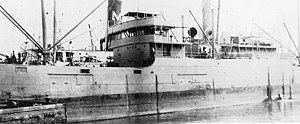
German submarine U-552 was a Type VIIC U-boat built for Nazi Germany's Kriegsmarine for service during World War II. She was laid down on 1 December 1939 at Blohm & Voss in Hamburg as yard number 528, launched on 14 September 1940, and went into service on 4 December 1940. U-552 was nicknamed the Roter Teufel after her mascot of a grinning devil, which was painted on the conning tower. She was one of the more successful of her class, operating for over three years of continual service and sinking or damaging 35 Allied ships with 164,276 GRT and 1,190 tons sunk and 26,910 GRT damaged. She was a member of 21 wolf packs.
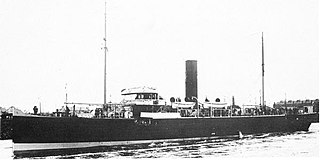
Q-ships, also known as Q-boats, decoy vessels, special service ships, or mystery ships, were heavily armed merchant ships with concealed weaponry, designed to lure submarines into making surface attacks. This gave Q-ships the chance to open fire and sink them. The use of Q-ships contributed to the abandonment of cruiser rules restricting attacks on unarmed merchant ships and to the shift to unrestricted submarine warfare in the 20th century.

USS Asterion was a Q-ship of the United States Navy named for Asterion, a star in the constellation Canes Venatici.

USS Atik (AK-101) was a Q-ship of the United States Navy named for al-Atik, a double star in the constellation Perseus. Her twin sister ship was Asterion.
German submarine U-333 was a Type VIIC U-boat of Nazi Germany's Kriegsmarine during World War II. The submarine was laid down on 11 March 1940 at the Nordseewerke yard at Emden, launched on 14 June 1941, and commissioned on 25 August 1941 under the command of Kapitänleutnant Peter-Erich Cremer. After training with the 5th U-boat Flotilla at Kiel, on 1 January 1942 U-333 was transferred to the 3rd U-boat Flotilla based at La Pallice for front-line service.
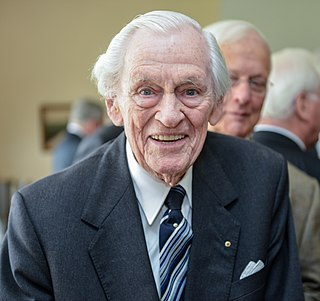
KorvettenkapitänReinhard Hardegen was a German U-boat commander during World War II. He was credited with the sinking of 25 ships, at a total of 136,661 tons. After the war, he spent a year and a half as a British prisoner-of-war before starting a successful oil trading business and serving as a member of Bremen's city council for over 32 years.
German submarine U-539 was a Type IXC/40 U-boat of Nazi Germany's Kriegsmarine during World War II. The submarine was laid down on 8 May 1942 at the Deutsche Werft yard in Hamburg as yard number 360, launched on 4 December 1942, and commissioned on 24 February 1943 under the command of Oberleutnant zur See Hans-Jürgen Lauterbach-Emden. After training with the 4th U-boat Flotilla in the Baltic Sea, the boat was transferred to the 10th U-boat Flotilla for front-line service on 1 July 1943. She carried out three war patrols, sinking one ship and damaged two more. Transferred to the 33rd U-boat Flotilla on 1 October 1944, she sailed on no further patrols, and surrendered to Allied forces on 9 May 1945. Transferred from Bergen, Norway, to Loch Ryan, Scotland, she foundered on 4 December 1945 while being towed to the scuttling grounds as part of "Operation Deadlight".
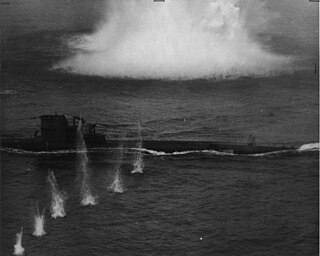
German submarine U-134 was a Type VIIC U-boat of Nazi Germany's Kriegsmarine during World War II. She was laid down on 6 September 1940 by Bremer Vulkan in Bremen-Vegesack as yard number 13 and commissioned on 26 July 1941. In seven patrols, U-134 sank three ships for a total of 12,147 gross register tons (GRT).
German submarine U-331 was a Type VIIC U-boat of Nazi Germany's Kriegsmarine during World War II, famous for sinking the battleship HMS Barham.

German submarine U-255 was a Type VIIC U-boat that served in Nazi Germany's Kriegsmarine during World War II. The submarine was laid down on 21 December 1940 at the Bremer Vulkan yard at Bremen-Vegesack, launched on 8 October 1941 and commissioned on 29 November 1941 under the command of Kapitänleutnant Reinhart Reche.
German submarine U-759 was a Type VIIC U-boat of Nazi Germany's Kriegsmarine during World War II. The submarine was laid down on 15 November 1940 at the Kriegsmarinewerft yard at Wilhelmshaven, launched on 30 May 1942, and commissioned on 15 August 1942 under the command of Oberleutnant zur See Rudolf Friedrich.

German submarine U-66 was a Type IXC U-boat of Nazi Germany's Kriegsmarine during World War II. The submarine was laid down on 20 March 1940 at the AG Weser yard at Bremen, launched on 10 October and commissioned on 2 January 1941 under the command of Kapitänleutnant Richard Zapp as part of the 2nd U-boat Flotilla.
Vorwärts was a wolfpack of German U-boats that operated from 25 August to 26 September 1942, in the Battle of the Atlantic during World War II. They attacked several convoys, principally Convoy ON 127, sailing from Liverpool to New York, and sank fifteen ships for a total of 79,331 gross register tons (GRT), and damaged nine (81,141 GRT).
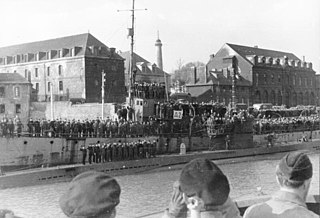
German submarine U-123 was a Type IXB U-boat of Nazi Germany's Kriegsmarine that operated during World War II. After that conflict, she became the French submarine Blaison (Q165) until she was decommissioned on 18 August 1959.

The SS Gulfamerica was an American steam tanker built by Bethlehem-Fairfield Shipyards Inc, of Sparrow's Point, Maryland and completed in March 1942. She was operated by the Gulf Oil Company of New York City and homeported in Philadelphia.
German submarine U-177 was a Type IXD2 U-boat of Nazi Germany's Kriegsmarine during World War II. The submarine was laid down on 25 November 1940, at the DeSchiMAG AG Weser yard in Bremen, as yard number 1017. She was launched on 1 October 1941, and commissioned on 14 March 1942, under the command of Kapitänleutnant Wilhelm Schulze. After a period of training with the 4th U-boat Flotilla at Stettin, the boat was transferred to the 10th flotilla on 1 October 1942, and based at Lorient, for front-line service, she was then reassigned to the 12th flotilla at Bordeaux on 1 December.
German submarine U-652 was a Type VIIC U-boat of Nazi Germany's Kriegsmarine during World War II. The submarine was laid down on 5 February 1940 at the Howaldtswerke yard at Hamburg, launched on 7 February 1941, and commissioned on 3 April 1941 under the command of Oberleutnant zur See Georg-Werner Fraatz.
German submarine U-804 was a Type IXC/40 U-boat of Nazi Germany's Kriegsmarine during World War II. U-804 was ordered on 7 December 1940, and was laid down on 1 December 1942 at Deutsche Schiff- und Maschinenbau AG Seebeckwerft, Bremerhaven as yard number 362. She was launched on 1 April 1943 and commissioned under the command of Oberleutnant zur See der Reserve Herbert Meyer on 4 December of that year.
German submarine U-65 was a Type IXB U-boat of Nazi Germany's Kriegsmarine during World War II. Over the course of six war patrols between 9 April 1940 and 28 April 1941, she sank twelve ships and damaged three others for a total loss of 88,664 gross register tons (GRT).
The Torpedo Alley, or Torpedo Junction, off North Carolina, is one of the graveyards of the Atlantic Ocean, named for the high number of attacks on Allied shipping by German U-boats in World War II. Almost 400 ships were sunk, mostly during the Second Happy Time in 1942, and over 5,000 people were killed, many of whom were civilians and merchant sailors. Torpedo Alley encompassed the area surrounding the Outer Banks, including Cape Lookout and Cape Hatteras.
